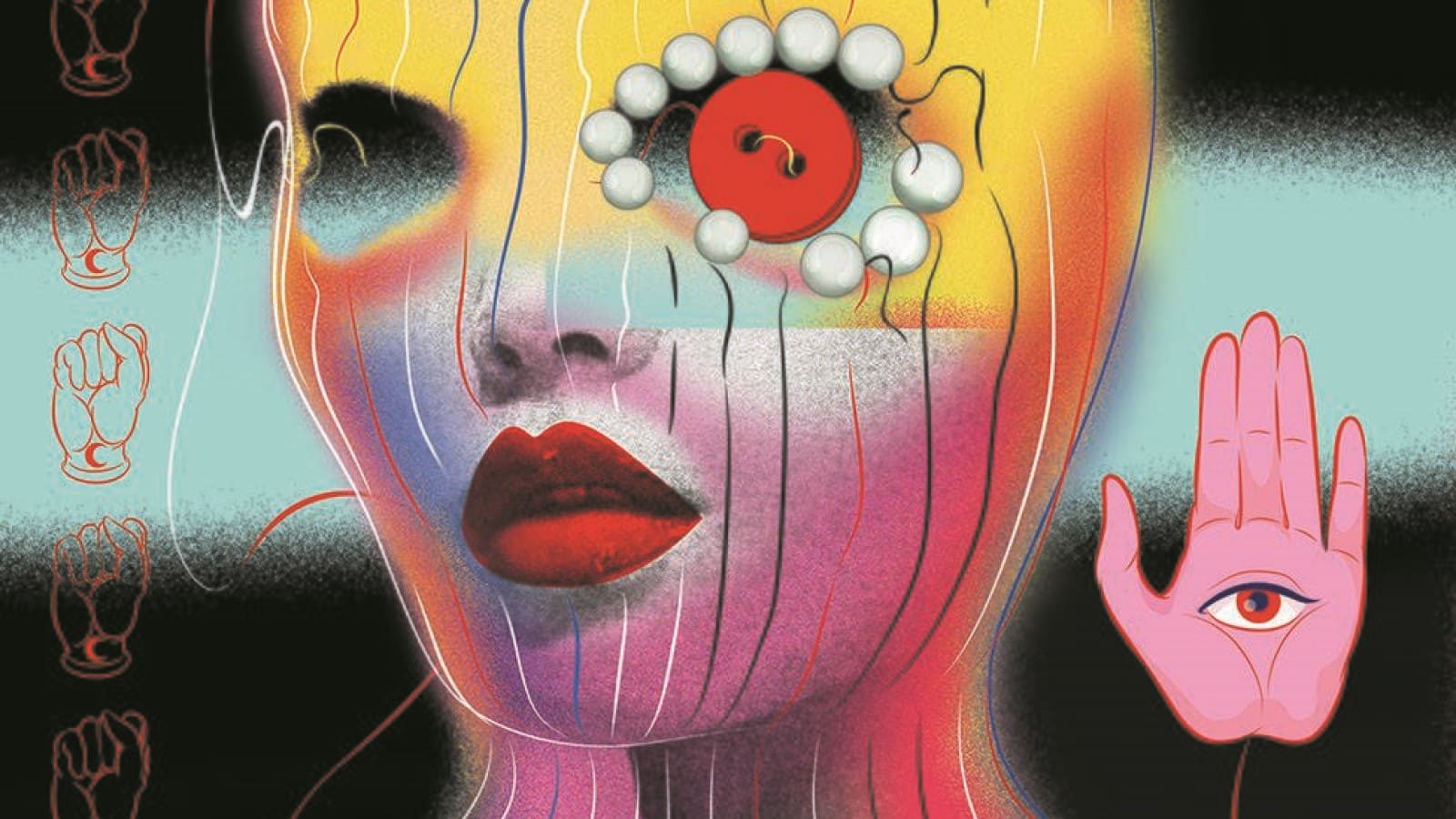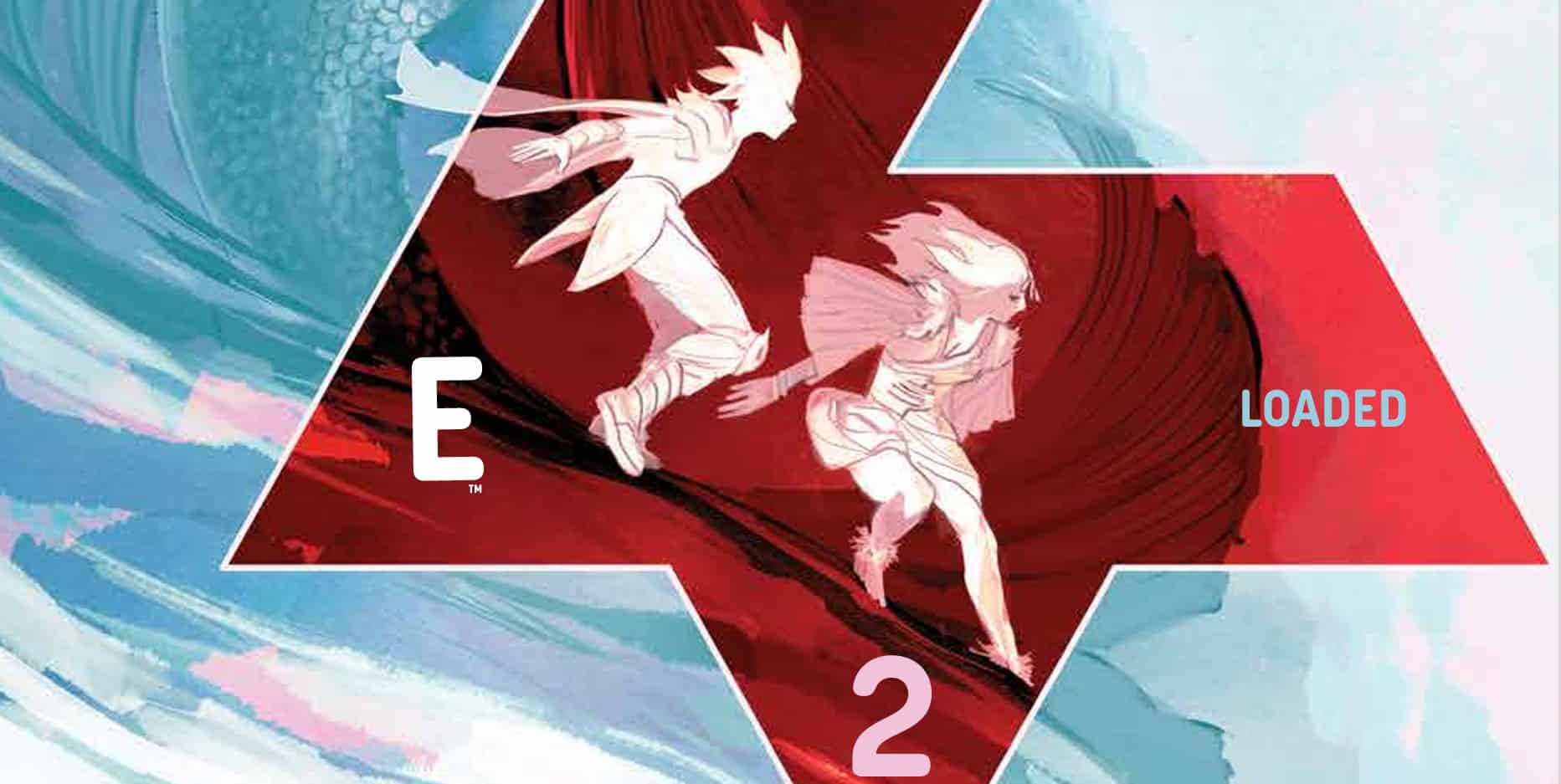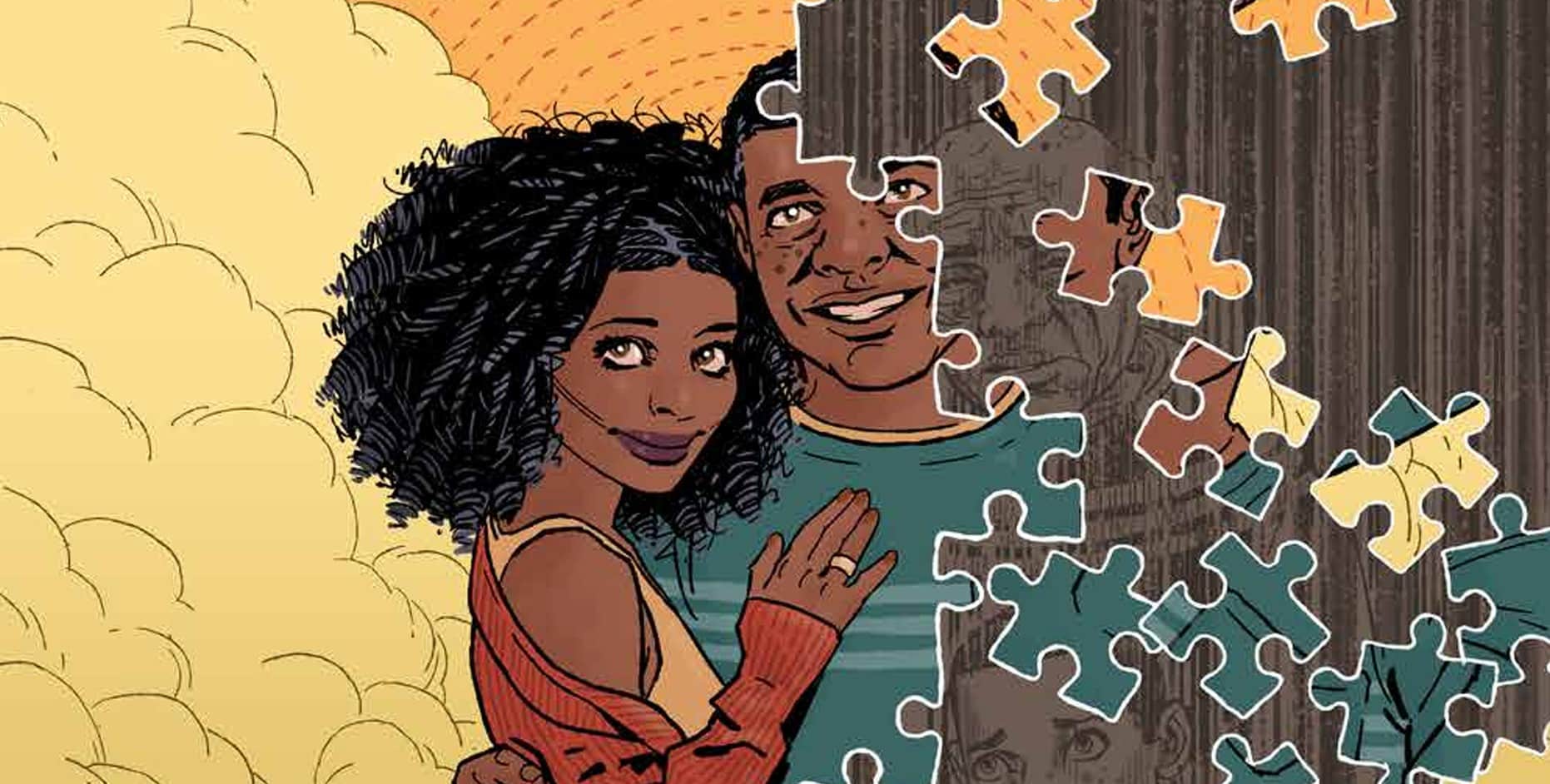M.O.M.: Mother of Madness is a three-issue miniseries, distributed by Image Comics, written by Emilia Clarke and Marguerite Bennett, drawn by Leila Leiz, colored by Triona Farrell and lettered by Haley Rose-Lyon.
Maya is a single mom who has superpowers tied to her hormonal cycle. She tackles the pressures of office life, managing friendships and keeping track of her intelligent son all while breaking down bad guys and gender barriers as a snarky feminist not afraid to break the fourth wall.
At first, everything felt a little heavy handed. I’ve been calling myself a feminist and involved in ant-racism spaces since I was in college (so, for about half my life), and my first thought about the opening pages of Mother of Madness was “Do we really need another one of these?”
But then as Maya recounted her teenage years, her family history and how her powers began to manifest along with the things all femmes have had yelled at them at some point, it took me back to the time I went running with my 2-year-old girl and I witnessed her first brush with street harassment and how, 20 years after my first memory of it, not much has changed.
Two panels hit me just as hard: “So what do you do when you’re a girl who has lost everyone she loves in the course of a year, alone in a house full of food you have zero desire to eat? You do what you’re supposed to do, good girl that you are. You lower your head, you lower your eyes and you clean.” I could probably write a whole memoir on my struggle with obsessive cleaning and the way it intersects with what I’ve been told makes a good daughter, wife and mother. I’ve had three distinct therapy sessions on my inability to separate cleaning from my self worth. And I know I’m not the only woman who struggles here.

Still, I write this from an extreme place of privilege. First of all, I’m white. Secondly, I’m cisgender. Though I’m bi, I have a loving, compassionate husband. My workplace encourages us to kick people out for the day if they make us feel uncomfortable with inappropriate comments. My friends and chosen family all believe in feminism and equality. I live in a safe, diverse neighborhood. I appreciate that M.O.M. is aware it comes from the same place of privilege. Maya’s best friend at work, Wanda, makes sure to point out her status as an able-bodied white girl, though it doesn’t make steps to speak on the intersectionality of racism and homophobia in addition to the issues faced by non-males aside from that.
Yet I think this could be an issue important to cis men open to reading it. I’ll never be able to entirely convey how going for a run alone is nerve-wracking at 10 a.m., but inconceivable at 10 p.m. Strangers come to my job and expect me to be their secretary for the day, and when I say no, feel justified in calling me a bitch. A defensive shell covers every interaction I have with men, from 30 years of trust being broken when I told myself, “They were one of the good ones.” And I am not alone in this. When you’re bitten by a dog, a fear of them tinges every interaction you’ll ever have with one again. This story is still needed because, well … look at the state of the world, from today’s debates on legislating which bathrooms trans people can use to whether abortion is accessible or still legal in America.
The idea of the things that make a woman scorned in society being what makes her powerful is intoxicating. Maya heals when sad, her senses are heightened when anxious, her shrill laugh shatters objects, her invisibility sets in when scared and her super strength is invaluable. Being that this short series is co-penned by Emilia Clarke of Game of Thrones, I couldn’t help but think of Tyrion’s line from season one: “Make it your strength. Then it can never be your weakness. Armour yourself in it, and it will never be used to hurt you.” How I wish I’d learned that lesson earlier in life, so much so that I was eager to look past M.O.M.’s surface-level feminist war cry in its first issue. It’s a series I think would pair well with The Care and Keeping of You for any teenager going through a mess of a time with sharp insults directed at them and bodily changes they can’t control assaulting their insides.
My other hang-up is maybe a tricky one. As a feminist with polycystic ovarian syndrome who has dear friends who are transwomen, I cringe at the idea of a menstrual cycle being the source of one’s power. I personally fluctuate between having one for months at a time and not seeing Aunt Flow again for months. I appreciate the story’s upfront attitude about hormone changes and puberty’s effects, as it’s still something WE DON’T TALK ABOUT. I would have wanted nothing more as a teenager for my puberty changes to just BE normal. I realize there will be the argument that maybe this is just a story for period havers, the countless of us who were and are told we’re dirty and unhygienic and disgusting for a bodily function we can’t control. At the same time, a period doesn’t make a mom. A period doesn’t designate womanhood. The other side of this is how many period havers are NOT women? This storyline would take on an entirely different and possibly traumatic meaning if the main character were a transman who has periods. This shouldn’t be up for debate, but it is. I realize the majority of period havers are cis women, and that’s the main character’s story. Is the menstrual cycle itself the source of the power, or are the hormones (as the chart at the back of issue #1 implies)? As a cis woman who mostly doesn’t have a period, I have to wonder if this is tied up in the idea of biological essentialism. Our world is steeped in the idea that big dicks equal power. Is making a big period equal power really all that better? Obviously, other people who have periods in this world don’t exhibit the same powers that Maya does, so it must be tied to her specifically. But what would that mean for a transwoman? What would that mean for a transman? What would that mean for someone like me, whose hormones and periods follow no trackable pattern if they were to be the source of the abilities?
Some of these questions are answered in the third issue, with the explanation that Maya’s powers came from a combination of the chemicals used in her parents’ lab. This explains how her powers are unique to her, but I’d like to know more. Is it purely hormonal or chemical based? How did this affect the women gobbled up by the trafficking ring? I want to know their stories. As we see when the villainess takes her own medicine, everyone’s body responds differently to the variety of hormones fluctuating around at any moment. I’d love the chance for Clarke and Bennett to explore this world more to tackle some of them. I’d hope for this series to kick off a longer-running exploration of the world, but I feel like we won’t get that chance.
The book does a wonderful job of focusing on the science in a way that doesn’t make its magic diminish or sound hokey. With her mother’s history as a scientist and Maya’s current job, she’s able to explore and enhance her powers outside of her period’s cycle. The addition of a spiritual guru to the team helps her learn how to tap into how her hormones are tied to her emotions to game her own system. In issue #2, we see Maya not only rely on her friends for help in creating a superhero suit, a supercar and a super knowledge base, but for her emotional needs as well. Anyone who’s picked up a cape comic or a dystopian novel knows that the hero who goes it alone is an overused, unrealistic trope. We need each other, and Clarke and Bennett make it clear that no one makes it alone, even if they have powers. Everyone has weaknesses or blindspots, and counting on our friends when we’re in emotional or physical distress is how we get by in life without causing more damage in the end. The friendships Maya forms to help her be a masked crusader and keep her emotions, time and powers in check are where this story excels.
Where I kept feeling like it needed more work was its “big bad.” The human traffickers who show up at the end of issues #1 and #2 feel like a patch put on a big plot hole. The human trafficking plotline, led by Lucille Caldwell, feels neglected from the beginning. Caldwell is a good foil to Maya, as she is an example of a powerful white woman invested in upholding the patriarchy, and the series would have benefited from that dynamic being explored more. It could have also benefited by not being tacked on at the end at all. As a mom who feels severely underrepresented already in comics and sci-fi, it would have been enough to make my heart soar if Maya was just a street vigilante. But without the promise of ongoing issues, I suppose we needed a Big Bad Blonde.
In a lot of ways, Mother of Madness reminded me a lot of The Power by Naomi Alderman, in which teen girls spontaneously develop electrical shock powers and take revenge on the men who harm them across the globe. I appreciate that this doesn’t take the jarring hand slap ending that Alderman took. The ending may come across as cheesy to some, but it’s heartfelt. Something I think is sorely needed in world, especially when dealing with human trafficking and body shame. Unlike another ending Emilia Clarke played a major part in, this one felt earned. Clarke, Bennett, Leiz, Farrell and Rose-Lyon have crafted a fascinating world filled with warm characters who help each other and push each other to be better. M.O.M. is designed to question our society’s view of gender, power and our complicity in it. Our flaws are what make us powerful, just as much as our strengths, and none of us can do it alone.
M.O.M.: Mother of Madness is scheduled to be available in trade Dec. 8.
Cat Purcell is a career services librarian, cosplayer, artist and massive coffee consumer. Follow her @thatcatpurcell.bsky.social.





